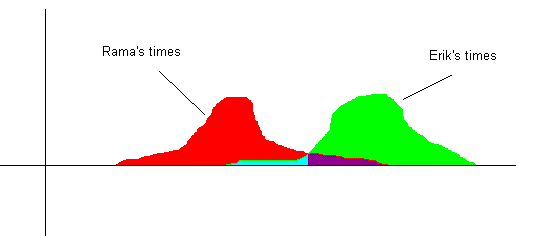AvGalen
Premium Member
Not entirely Puzzle Theory, but this is the best place for this question:
Given these results, is it possible to calculate the chances of Erik beating Rama?
I would like to know:
1) What are the chances of Eriks best single being better than Ramas best single during an average of 5
2) What are the chances of Eriks (corrected) average being better than Rama's (corrected) average during an average of 5
Bonus question: What about Mats beating them both on single
Given these results, is it possible to calculate the chances of Erik beating Rama?
I would like to know:
1) What are the chances of Eriks best single being better than Ramas best single during an average of 5
2) What are the chances of Eriks (corrected) average being better than Rama's (corrected) average during an average of 5
Bonus question: What about Mats beating them both on single

